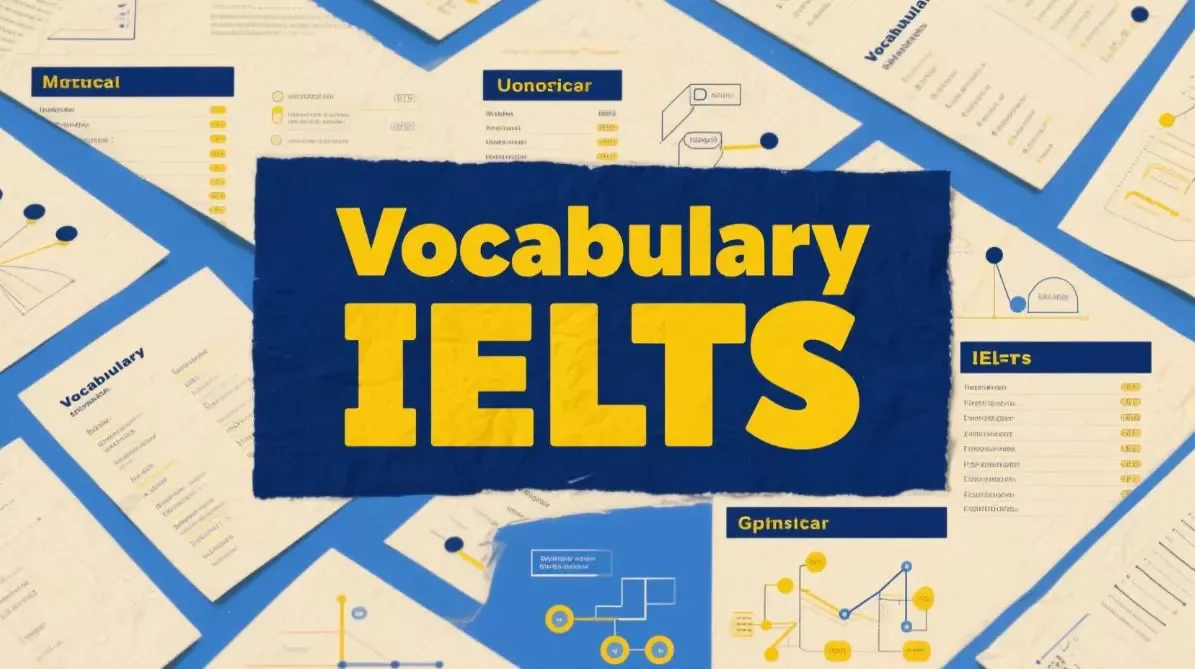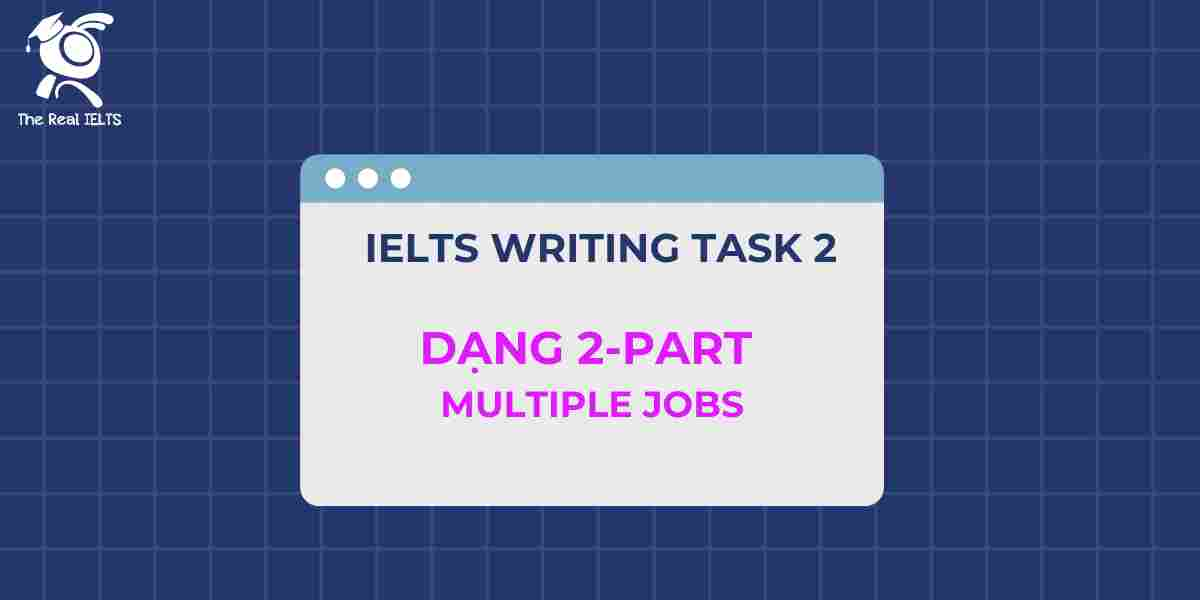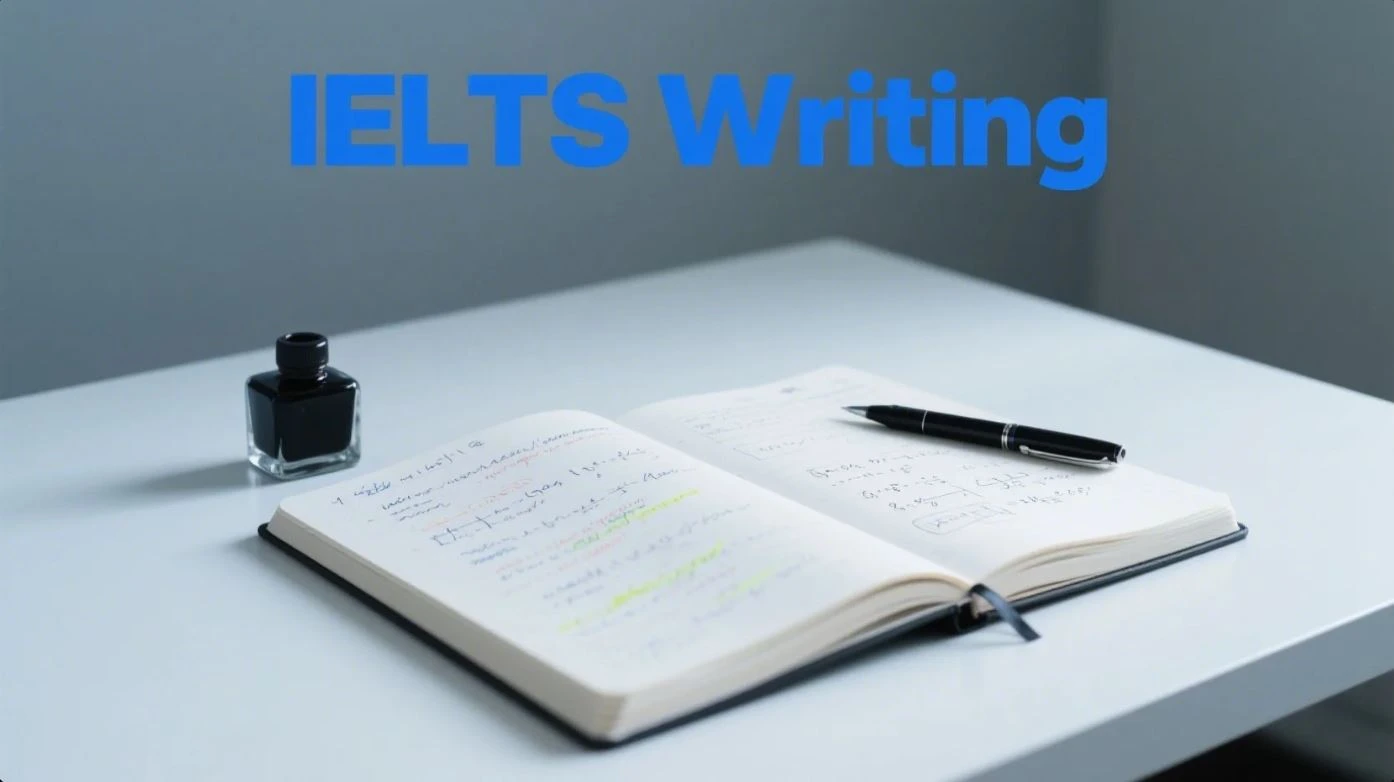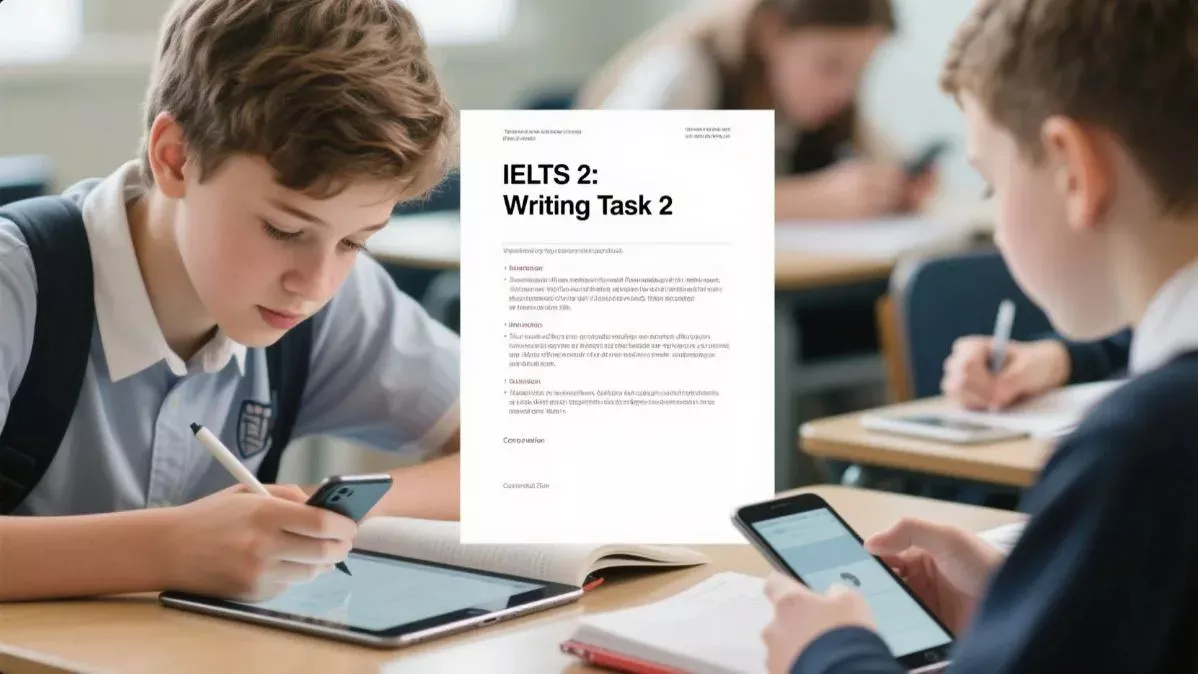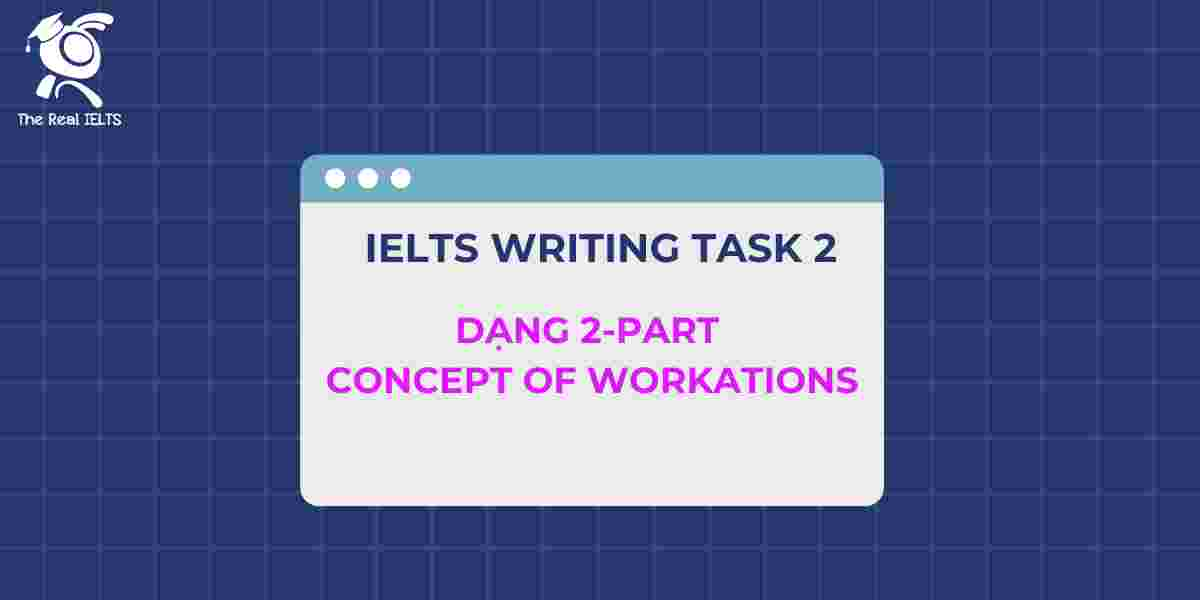Kỹ năng viết trong kỳ thi IELTS luôn là thách thức lớn đối với người học, đặc biệt ở IELTS Writing Task 2 Phần 54, nơi yêu cầu khả năng lập luận sắc bén và sử dụng ngôn ngữ linh hoạt. Để đạt band điểm cao, thí sinh cần nắm vững cấu trúc bài viết, phát triển ý tưởng logic và sử dụng từ vựng học thuật chính xác. Hiểu rõ tiêu chí chấm điểm và luyện tập chiến lược phù hợp sẽ giúp người học tự tin chinh phục mục tiêu.
Đọc thêm: IELTS Writing Task 2 Phần 53
Đề 1 IELTS Writing Task 2
Some people believe that the best way to reduce crime is to give longer prison sentences, while others think that alternative methods, such as education and job training, are more effective. Discuss both views and give your opinion.
Bài essay (Band 6.5)
Crime is a serious issue in many societies, and people have different views on how to tackle it. Some argue that longer prison sentences are the best solution, while others believe that alternative approaches like education and job training are more effective. This essay will discuss both perspectives and explain why I support the latter.
On the one hand, supporters of longer prison sentences claim that it deters potential criminals. They argue that the fear of spending many years in jail can discourage people from committing crimes. Moreover, keeping offenders in prison for a long time ensures public safety by preventing them from causing further harm. For example, in some countries with strict laws, crime rates are relatively low, which suggests that harsh punishments can be effective.
On the other hand, many believe that education and job training are better solutions because they address the root causes of crime. Poverty and lack of opportunities often lead people to illegal activities, so providing skills and knowledge can help them find jobs and live lawfully. For instance, rehabilitation programs in some nations have reduced reoffending rates significantly. I agree with this view because punishing without reform does not solve the problem in the long term.
In conclusion, while longer prison sentences may deter crime to some extent, alternative methods like education and job training are more effective in reducing crime rates. By focusing on rehabilitation, societies can create lasting solutions to this issue.
Chấm điểm (4 tiêu chí)
Task Response: 6.5
The essay addresses both views and provides a clear opinion, meeting the task requirements. However, the arguments are somewhat basic, with limited development of ideas (e.g., the example of “strict laws” is vague). To reach Band 7, more specific examples and deeper analysis are needed.
Coherence and Cohesion: 6.5
The essay is logically organized with clear paragraphing and basic linking words (e.g., “On the one hand,” “Moreover”). However, transitions between ideas within paragraphs are sometimes abrupt, and cohesion could be improved with more varied connectors. Band 7 requires smoother flow and better use of cohesive devices.
Lexical Resource: 6.5
The vocabulary is appropriate, with some academic words (e.g., deters, rehabilitation), but the range is limited, and repetition of simple terms like “crime” occurs. To achieve Band 7, a wider variety of precise vocabulary and collocations is needed.
Grammatical Range and Accuracy: 6.5
The essay uses a mix of simple and complex structures (e.g., conditional sentences, relative clauses). However, there are minor errors (e.g., “punishing without reform does not solve” could be clearer), and the range of structures is not extensive. Band 7 requires more complex sentences with fewer errors.
Phân tích từ vựng
- Deters
- Nghĩa tiếng Việt: Ngăn chặn, răn đe.
- Giải thích: Dùng để chỉ hành động làm ai đó sợ hãi hoặc từ bỏ ý định làm gì, thường trong ngữ cảnh pháp luật hoặc hành vi (e.g., “Harsh punishments deter crime”). Từ này mang tính học thuật, phù hợp với bài IELTS.
- Ngữ cảnh: Thường dùng với danh từ chỉ hành vi xấu (e.g., crime, cheating).
- Rehabilitation
- Nghĩa tiếng Việt: Phục hồi, cải tạo.
- Giải thích: Chỉ quá trình giúp người phạm tội tái hòa nhập xã hội thông qua giáo dục hoặc đào tạo. Từ này phổ biến trong bài viết về tội phạm hoặc y tế (e.g., “Rehabilitation programs reduce reoffending”).
- Ngữ cảnh: Thường đi với “programs” hoặc “process.”
- Root causes
- Nghĩa tiếng Việt: Nguyên nhân gốc rễ.
- Giải thích: Cụm từ học thuật dùng để chỉ lý do sâu xa của một vấn đề (e.g., “Poverty is a root cause of crime”). Phù hợp khi phân tích vấn đề xã hội.
- Ngữ cảnh: Thường dùng trong dạng Problem-Solution hoặc Discussion.
- Reoffending
- Nghĩa tiếng Việt: Tái phạm.
- Giải thích: Chỉ hành động phạm tội lại sau khi đã bị trừng phạt. Từ này chuyên biệt, giúp tăng tính chính xác trong bài viết về tội phạm (e.g., “Rehabilitation reduces reoffending rates”).
- Ngữ cảnh: Thường dùng với “rates” hoặc “reduce.”
- Public safety
- Nghĩa tiếng Việt: An toàn công cộng.
- Giải thích: Chỉ trạng thái xã hội không bị đe dọa bởi tội phạm hoặc nguy hiểm. Cụm từ này mang tính trang trọng, phù hợp khi thảo luận về luật pháp (e.g., “Longer sentences ensure public safety”).
- Ngữ cảnh: Thường dùng trong lập luận về chính sách.
Phân tích ngữ pháp
- Conditional sentences (e.g., “the fear of spending many years in jail can discourage people”)
- Giải thích tiếng Việt: Câu điều kiện loại 0 hoặc 1 được dùng để diễn tả khả năng hoặc kết quả logic (e.g., “If people fear punishment, they avoid crime”). Trong bài, cấu trúc này đúng nhưng chỉ dùng ở mức cơ bản. Để đạt Band 7, cần thử các câu điều kiện phức tạp hơn (loại 2, 3).
- Lưu ý: Cần đảm bảo chia động từ đúng (e.g., “can” phù hợp với loại 1).
- Relative clauses (e.g., “countries with strict laws”)
- Giải thích tiếng Việt: Mệnh đề quan hệ (dùng “which,” “that,” “with”) giúp bổ sung thông tin cho danh từ. Trong bài, cấu trúc này được dùng chính xác nhưng chưa đa dạng (chỉ dùng “which”). Để cải thiện, cần thêm mệnh đề quan hệ không giới hạn (non-defining) hoặc rút gọn.
- Lưu ý: Tránh lặp lại “which” quá nhiều.
- Gerund as subject (e.g., “punishing without reform does not solve”)
- Giải thích tiếng Việt: Danh động từ (gerund) được dùng làm chủ ngữ (e.g., “Punishing criminals is ineffective”). Cấu trúc này đúng nhưng câu trong bài hơi vụng về, thiếu độ trôi chảy. Để đạt Band 7, cần diễn đạt rõ ràng hơn (e.g., “Punishing offenders without reform fails to address underlying issues”).
- Lưu ý: Đảm bảo danh động từ phù hợp với động từ chính.
Tổng kết & gợi ý cải thiện
Tổng kết: Bài viết đạt Band 6.5 nhờ đáp ứng yêu cầu đề bài, có lập luận rõ ràng và sử dụng từ vựng, ngữ pháp ở mức trung bình khá. Tuy nhiên, các ý chưa được phát triển sâu, ví dụ thiếu cụ thể, và từ vựng/ngữ pháp còn hạn chế về độ đa dạng. Một số lỗi nhỏ và cách diễn đạt thiếu tự nhiên cũng làm giảm điểm.
Gợi ý cải thiện để đạt Band 7:
- Task Response: Cung cấp ví dụ cụ thể hơn (e.g., tên quốc gia, số liệu) và phân tích sâu hơn về tác động của từng giải pháp.
- Coherence and Cohesion: Sử dụng đa dạng từ nối (e.g., “In contrast,” “As a result”) và đảm bảo ý trong đoạn liên kết chặt chẽ.
- Lexical Resource: Thêm từ vựng học thuật cấp cao hơn (e.g., “mitigate,” “recidivism”) và tránh lặp từ như “crime.”
- Grammatical Range: Dùng cấu trúc phức tạp hơn (e.g., câu bị động nâng cao, mệnh đề quan hệ không giới hạn) và giảm lỗi nhỏ.
Đề 2 IELTS Writing Task 2
Some people believe that governments should spend money on building high-speed railways, while others think that improving existing public transport systems is more important. Discuss both views and give your own opinion.
Bài essay (Band 6.5)
In recent years, transportation has become a hot topic. Some argue that governments should invest in high-speed railways, while others believe that upgrading current public transport systems is a better choice. This essay will discuss both perspectives and provide my own view.
On the one hand, supporters of high-speed railways claim that they bring significant benefits. These trains can connect distant cities quickly, reducing travel time and boosting economic growth. For example, countries like Japan have shown how high-speed trains attract tourists and improve business activities. Moreover, such railways are often more environmentally friendly than cars or planes, as they produce less pollution. However, building these systems is very expensive, and some countries may struggle to afford them.
On the other hand, those who favor improving existing public transport argue that it is more practical. Many cities already have buses and subways, but these are often old or overcrowded. By allocating funds to upgrade these systems, governments can enhance the quality of life for local residents. For instance, better buses can reduce traffic jams and make daily commuting easier. This approach is also cheaper than constructing new railways, allowing governments to use money for other needs like healthcare.
In my opinion, improving existing public transport is more important. Most people rely on local buses and trains daily, so upgrading these systems will benefit a larger population. High-speed railways, while useful, mainly serve long-distance travelers.
In conclusion, although high-speed railways have advantages, improving current transport systems is a more practical and beneficial choice for most communities.
Chấm điểm (4 tiêu chí)
Task Response: 6.5
The essay addresses both views and provides a clear opinion. It includes relevant ideas, but the arguments lack depth in some areas (e.g., limited examples for public transport improvements). The conclusion is clear but slightly repetitive.
Coherence and Cohesion: 6.5
The essay is logically organized with clear paragraphs. Linking words like “moreover” and “for instance” are used, but transitions between ideas could be smoother. Some repetition of ideas (e.g., “practical”) reduces cohesion slightly.
Lexical Resource: 6.5
The vocabulary is appropriate with some academic phrases (e.g., bring significant benefits, allocating funds), but there is repetition of basic words (e.g., “better,” “improve”). No major errors in word choice, but more variety could enhance the score.
Grammatical Range and Accuracy: 6.5
The essay uses a mix of simple and complex sentences. There are minor errors (e.g., article misuse, verb tense inconsistency), but they do not impede understanding. More complex structures could improve the score.
Phân tích từ vựng
- Bring significant benefits
- Nghĩa: Mang lại lợi ích đáng kể
- Giải thích: Cụm từ này được dùng trong văn học thuật để nhấn mạnh tác động tích cực của một hành động hoặc chính sách. Trong bài, nó mô tả lợi ích của đường sắt cao tốc, phù hợp với ngữ cảnh thảo luận chính sách.
- Reducing travel time
- Nghĩa: Giảm thời gian di chuyển
- Giải thích: Cụm từ này thường xuất hiện khi nói về cải thiện giao thông. Nó được dùng chính xác trong bài để chỉ lợi ích của tàu cao tốc, nhưng cần chú ý ghép với danh từ (e.g., “time”) để đúng ngữ pháp.
- Allocating funds
- Nghĩa: Phân bổ ngân sách
- Giải thích: Đây là cụm từ học thuật, thường dùng trong các bài viết về chính sách hoặc tài chính công. Trong bài, nó được dùng để nói về việc chi tiền cho giao thông công cộng, thể hiện sự trang trọng.
- Enhance the quality of life
- Nghĩa: Nâng cao chất lượng cuộc sống
- Giải thích: Cụm này phổ biến trong các bài viết về lợi ích xã hội. Trong bài, nó được dùng để nhấn mạnh tác động của giao thông công cộng tốt hơn, nhưng cần lưu ý cấu trúc đúng (e.g., “enhance” + danh từ).
- Environmentally friendly
- Nghĩa: Thân thiện với môi trường
- Giải thích: Cụm từ này phù hợp khi thảo luận về các giải pháp bền vững. Trong bài, nó mô tả lợi ích của tàu cao tốc, nhưng cần kết hợp với danh từ hoặc cụm danh từ (e.g., “systems”) để rõ nghĩa.
Phân tích ngữ pháp
- Complex sentences with “while”
- Giải thích: Cấu trúc câu phức với “while” (e.g., “Some argue that…, while others believe…”) được dùng đúng trong đoạn mở bài để so sánh hai quan điểm. Tuy nhiên, cần đảm bảo hai vế cân bằng về mặt ngữ pháp (cùng thì hoặc cấu trúc). Trong bài, câu này đúng nhưng hơi đơn giản.
- Article misuse
- Giải thích: Bài có lỗi nhỏ về mạo từ, ví dụ: “better buses can reduce traffic jams” nên là “better buses can reduce the traffic jams” vì “traffic jams” ở đây ám chỉ cụ thể. Lỗi này phổ biến ở Band 6.5, cần chú ý ngữ cảnh để dùng “the” đúng.
- Verb tense inconsistency
- Giải thích: Trong câu “countries like Japan have shown how high-speed trains attract tourists,” thì hiện tại hoàn thành (“have shown”) đúng, nhưng một số câu khác (e.g., “make daily commuting easier”) nên dùng thì hiện tại tiếp diễn (“are making”) để nhấn mạnh hành động đang diễn ra. Lỗi này nhỏ nhưng ảnh hưởng điểm.
- Passive voice
- Giải thích: Cấu trúc bị động (e.g., “are often overcrowded”) được dùng đúng khi nói về hệ thống giao thông công cộng. Tuy nhiên, bài ít dùng bị động ở các chỗ khác, làm giảm sự đa dạng. Thêm bị động (e.g., “Funds should be allocated”) sẽ tăng điểm.
Tổng kết & gợi ý cải thiện
The essay achieves Band 6.5 due to its clear structure, relevant ideas, and adequate vocabulary, but it falls short of Band 7 because of limited argument depth, minor grammatical errors, and repetitive word choices. The arguments are logical but lack specific examples or data to strengthen them, and transitions between ideas could be smoother.
Gợi ý cải thiện để đạt Band 7:
- Task Response: Provide more detailed examples (e.g., specific cities with improved public transport) and develop arguments further to show critical thinking.
- Coherence and Cohesion: Use a wider range of linking devices (e.g., “in contrast,” “consequently”) and avoid repeating words like “practical.”
- Lexical Resource: Incorporate more Band 7 vocabulary (e.g., “facilitate,” “prioritize”) and avoid overusing basic words like “better.”
- Grammatical Range: Use more complex structures, such as conditional sentences (“If governments invested…, it would…”) or advanced passive voice, and minimize minor errors like article misuse.
Đề 3 IELTS Writing Task 2
Some people believe that governments should spend more money on public transportation to reduce traffic congestion and pollution. Others argue that individuals should take responsibility for reducing their own carbon footprint. Discuss both views and give your own opinion.
Bài essay (Band 6.5)
Traffic congestion and pollution are growing problems in many cities. Some people think governments should invest more in public transportation to solve these issues, while others believe individuals should take action to reduce their environmental impact. This essay will discuss both perspectives and present my own view.
On the one hand, supporters of government investment argue that public transportation is an effective way to reduce traffic and pollution. By improving bus and train systems, governments can encourage people to use cars less, which decreases the number of vehicles on the road. For example, cities like Singapore have efficient public transport, leading to less congestion and cleaner air. Additionally, public transportation is more sustainable because it uses fuel more efficiently than private cars. Therefore, allocating funds to this sector can have a significant impact on environmental problems.
On the other hand, some people believe individuals should take responsibility for their carbon footprint. They argue that personal actions, such as cycling, walking, or using electric cars, can reduce pollution. For instance, if more people choose to cycle to work, it could contribute to fewer emissions. Moreover, individuals can adopt habits like carpooling, which minimizes the use of private vehicles. This view emphasizes that collective small efforts can lead to substantial change.
In my opinion, both sides have valid points, but I believe governments should take the lead. Public transportation improvements benefit everyone and create long-term solutions, while individual actions may not be enough for large-scale change. However, individuals should still make efforts to support these initiatives.
In conclusion, while individual actions are important, government investment in public transportation is a more effective solution to tackle traffic congestion and pollution.
Chấm điểm (4 tiêu chí)
Task Response: 6.5
The essay addresses both views and provides a clear opinion, meeting the task requirements. The arguments are relevant, with examples like Singapore’s transport system and cycling. However, the discussion lacks depth in exploring counterarguments or potential drawbacks, which limits it to Band 6.5.
Coherence and Cohesion: 6.5
The essay is logically organized with a clear structure (introduction, body paragraphs, conclusion). Linking words like “for example,” “additionally,” and “moreover” are used appropriately. However, some transitions (e.g., between individual actions and government responsibility) feel abrupt, and paragraph development could be more cohesive.
Lexical Resource: 6.5
The vocabulary is appropriate for Band 6.5, with some academic phrases like allocating funds and significant impact. Word choices are generally accurate, but there is limited variety, and some repetition (e.g., “pollution,” “reduce”) could be replaced with synonyms to show a wider range.
Grammatical Range and Accuracy: 6.5
The essay uses a mix of simple and complex sentences, such as conditional structures and relative clauses. Most sentences are accurate, but minor errors (e.g., “minimizes the use of” could be “reduces the reliance on”) and occasional awkward phrasing prevent a higher score.
Phân tích từ vựng
- Allocating funds
- Nghĩa tiếng Việt: Phân bổ ngân sách.
- Giải thích: Cụm từ này thường dùng trong ngữ cảnh học thuật hoặc chính thức để nói về việc chính phủ hoặc tổ chức phân phối tiền cho một mục đích cụ thể, như cải thiện giao thông công cộng. Trong bài, nó thể hiện ý tưởng chính phủ đầu tư vào một lĩnh vực.
- Significant impact
- Nghĩa tiếng Việt: Tác động đáng kể.
- Giải thích: Dùng để nhấn mạnh mức độ ảnh hưởng của một hành động hoặc chính sách. Trong bài, cụm này giúp làm rõ lợi ích của giao thông công cộng trong việc giảm ô nhiễm.
- Contribute to
- Nghĩa tiếng Việt: Đóng góp vào.
- Giải thích: Cụm động từ này phổ biến trong văn viết học thuật để chỉ việc một hành động dẫn đến một kết quả nhất định. Trong bài, nó được dùng để nói về tác động của việc đi xe đạp đối với giảm khí thải.
- Minimizes the use of
- Nghĩa tiếng Việt: Giảm thiểu việc sử dụng.
- Giải thích: Cụm này mang tính học thuật, dùng để nói về việc cắt giảm một hoạt động hoặc tài nguyên. Tuy nhiên, trong bài, cụm này hơi vụng về; “reduces reliance on” có thể tự nhiên hơn.
- Substantial change
- Nghĩa tiếng Việt: Thay đổi đáng kể.
- Giải thích: Dùng để nhấn mạnh một sự thay đổi lớn, thường trong ngữ cảnh tích cực. Trong bài, nó được dùng để nói về hiệu quả của các hành động cá nhân khi được thực hiện tập thể.
Phân tích ngữ pháp
- Conditional structures (e.g., “If more people choose to cycle to work, it could contribute to fewer emissions”)
- Giải thích tiếng Việt: Câu điều kiện (loại 1 hoặc 2) được dùng để nói về khả năng hoặc giả định. Trong bài, cấu trúc này đúng ngữ pháp và phù hợp để trình bày một lập luận logic. Tuy nhiên, bài chỉ dùng câu điều kiện đơn giản, thiếu sự đa dạng (e.g., câu điều kiện loại 3 hoặc cấu trúc phức tạp hơn).
- Relative clauses (e.g., “which decreases the number of vehicles on the road”)
- Giải thích tiếng Việt: Mệnh đề quan hệ được dùng để bổ sung thông tin cho danh từ. Trong bài, mệnh đề này đúng ngữ pháp và giúp câu văn rõ ràng hơn. Tuy nhiên, bài chỉ dùng “which” và thiếu các dạng khác như “who” hoặc “whose” để thể hiện sự phong phú.
- Minimizes the use of (e.g., “minimizes the use of private vehicles”)
- Giải thích tiếng Việt: Cụm này không sai ngữ pháp, nhưng cách diễn đạt hơi vụng về trong ngữ cảnh. “Reduces reliance on” hoặc “decreases the dependence on” sẽ tự nhiên và học thuật hơn. Đây là lỗi nhỏ nhưng làm giảm tính trôi chảy của câu.
Tổng kết & gợi ý cải thiện
Tổng kết: Bài essay đạt Band 6.5 nhờ cấu trúc rõ ràng, lập luận phù hợp, và từ vựng học thuật ở mức khá. Tuy nhiên, các hạn chế bao gồm thiếu chiều sâu trong lập luận, một số cụm từ lặp lại, và ngữ pháp chưa đa dạng. Những lỗi nhỏ như cách dùng “minimizes the use of” cũng ảnh hưởng đến ấn tượng tổng thể. (Một số nhận xét mang tính ước lượng vì không thể mô phỏng chính xác chấm điểm như người thật.)
Gợi ý cải thiện để đạt Band 7:
- Sâu sắc hơn trong lập luận: Thêm các ý phản biện hoặc phân tích nhược điểm của mỗi quan điểm (e.g., chi phí cao của giao thông công cộng hoặc khó khăn trong thay đổi thói quen cá nhân).
- Đa dạng từ vựng: Thay thế các từ lặp như “pollution” bằng “environmental degradation” hoặc “air quality issues”.
- Phong phú ngữ pháp: Sử dụng thêm các cấu trúc phức tạp như câu điều kiện loại 3, mệnh đề quan hệ không xác định, hoặc câu bị động nâng cao.
- Cải thiện sự trôi chảy: Đảm bảo các cụm từ như “minimizes the use of” được thay bằng cách diễn đạt tự nhiên hơn để tăng tính mạch lạc.
Đề 4 IELTS Writing Task 2
Some people believe that the best way to reduce crime is to give longer prison sentences. Others, however, think that there are better alternative ways to reduce crime. Discuss both views and give your opinion.
Bài essay (Band 6.5)
Crime is a serious issue in many societies, and people have different views about how to tackle it. Some argue that longer prison sentences are the most effective solution, while others believe alternative methods are better. This essay will discuss both perspectives and explain why I support alternative approaches.
On the one hand, harsher punishments like extended prison sentences can deter potential criminals. The fear of spending many years in jail may discourage people from committing crimes. For example, in countries with strict laws, such as Singapore, crime rates are relatively low because individuals know the consequences are severe. Moreover, longer sentences keep dangerous offenders away from society, ensuring public safety. However, this approach may not address the root causes of crime, such as poverty or lack of education, and prisons can sometimes become places where criminals learn more illegal behaviors.
On the other hand, alternative methods focus on preventing crime and rehabilitating offenders. Education and job training programs can help people avoid criminal activities by giving them better opportunities. For instance, in some European countries, rehabilitation programs have reduced recidivism rates because offenders learn skills to reintegrate into society. Additionally, community service or counseling can be more effective for minor offenders than jail time. These methods not only save government resources but also help individuals become law-abiding citizens.
In conclusion, while longer prison sentences may deter crime and protect society, I believe alternative methods like rehabilitation and education are more effective in addressing the causes of crime. By focusing on prevention and reform, societies can achieve long-term reductions in crime rates.
Chấm điểm
Task Response: 6.5
The essay addresses both views and provides a clear opinion, with relevant ideas and examples. However, the arguments are somewhat general, and the discussion lacks depth in exploring the complexities of each approach. To reach Band 7, more specific examples and nuanced reasoning are needed.
Coherence and Cohesion: 6.5
The essay is logically organized with clear paragraphing and basic linking words (e.g., “On the one hand,” “Moreover”). However, transitions between ideas could be smoother, and some cohesive devices are repetitive. Using a wider range of linking phrases would improve the score.
Lexical Resource: 6.5
The vocabulary is appropriate, with some academic phrases (e.g., recidivism rates, law-abiding citizens). However, word choice is occasionally repetitive, and more variety or precision could enhance the essay. Minor errors in collocation exist but do not impede understanding.
Grammatical Range and Accuracy: 6.5
The essay uses a mix of simple and complex sentences, with generally accurate grammar. Errors like subject-verb agreement and article misuse are minor but noticeable. A wider range of structures and fewer errors would push this to Band 7.
Phân tích từ vựng
- Longer prison sentences
- Nghĩa tiếng Việt: Các bản án tù dài hơn.
- Giải thích: Cụm từ này được dùng trong ngữ cảnh pháp luật để chỉ việc tăng thời gian giam giữ nhằm trừng phạt hoặc răn đe. Trong bài, nó xuất hiện ở phần giới thiệu và thân bài để chỉ quan điểm về hình phạt nghiêm khắc hơn. Thay vì lặp lại “longer,” có thể dùng từ đồng nghĩa như “extended” để tăng tính đa dạng.
- Harsher punishments
- Nghĩa tiếng Việt: Hình phạt nghiêm khắc hơn.
- Giải thích: Dùng để chỉ các biện pháp trừng phạt mạnh tay, thường trong các bài viết về luật pháp hoặc tội phạm. Trong bài, cụm này giúp nhấn mạnh ý tưởng về việc tăng cường hình phạt, nhưng cần chú ý ghép từ chính xác (e.g., không dùng “harsh sentences”).
- Ensuring public safety
- Nghĩa tiếng Việt: Đảm bảo an toàn công cộng.
- Giải thích: Cụm này thường xuất hiện trong các bài viết về chính sách xã hội hoặc an ninh. Trong bài, nó được dùng để giải thích lợi ích của việc giam giữ tội phạm lâu hơn. Người viết cần đảm bảo cụm này đi với động từ phù hợp (e.g., “ensure” hoặc “promote”).
- Preventing crime
- Nghĩa tiếng Việt: Ngăn chặn tội phạm.
- Giải thích: Một cụm phổ biến trong các bài luận về giải pháp xã hội, nhấn mạnh việc dừng tội phạm trước khi xảy ra. Trong bài, cụm này được dùng đúng ngữ cảnh nhưng lặp lại nhiều lần, có thể thay bằng “reducing crime” để tránh trùng lặp.
- Recidivism rates
- Nghĩa tiếng Việt: Tỷ lệ tái phạm.
- Giải thích: Từ vựng học thuật cao, thường dùng trong các bài viết về cải tạo tội phạm. Trong bài, cụm này được dùng chính xác để chỉ hiệu quả của các chương trình phục hồi, nhưng cần chú ý phát âm và ngữ cảnh (thường đi với động từ như “reduce” hoặc “increase”).
- Law-abiding citizens
- Nghĩa tiếng Việt: Công dân tuân thủ pháp luật.
- Giải thích: Cụm này mang tính trang trọng, dùng để chỉ những người sống theo quy định pháp luật. Trong bài, nó được dùng tốt ở phần kết luận, nhưng có thể thay bằng “responsible citizens” để tăng tính linh hoạt.
Phân tích ngữ pháp
- Subject-verb agreement
- Giải thích tiếng Việt: Trong bài, có một số lỗi nhỏ về sự hòa hợp giữa chủ ngữ và động từ, ví dụ: “prisons can sometimes become places where criminals learn more illegal behaviors” đúng, nhưng câu tương tự có thể sai nếu viết “prisons becomes” (không xuất hiện trong bài nhưng là lỗi phổ biến ở Band 6.5). Người viết cần kiểm tra kỹ số ít/số nhiều của chủ ngữ, đặc biệt khi chủ ngữ là danh từ trừu tượng như “fear” hoặc “government.”
- Complex sentence structures
- Giải thích tiếng Việt: Bài viết sử dụng một số câu phức với mệnh đề quan hệ (e.g., “offenders who learn skills to reintegrate into society”). Tuy nhiên, các cấu trúc này còn đơn giản và lặp lại. Để đạt Band 7, cần dùng đa dạng hơn, như câu điều kiện (“If governments invest in education, crime rates could decrease”) hoặc mệnh đề nhượng bộ (“Although longer sentences deter crime, they do not solve root causes”).
- Article misuse
- Giải thích tiếng Việt: Bài có lỗi nhỏ về mạo từ, ví dụ: “the root causes of crime” đúng, nhưng nếu viết “root causes of crime” (thiếu “the”) sẽ kém chính xác. Ở trình độ 6.5, người viết thường quên mạo từ khi nói về khái niệm chung (e.g., “crime” vs. “the crime”). Cần luyện tập quy tắc mạo từ với danh từ đếm được/không đếm được.
- Use of passive voice
- Giải thích tiếng Việt: Bài sử dụng bị động tốt ở một số chỗ (e.g., “offenders are kept away from society”). Tuy nhiên, lạm dụng bị động hoặc dùng sai ngữ cảnh có thể làm câu kém tự nhiên. Để cải thiện, cần kết hợp bị động và chủ động linh hoạt hơn, ví dụ: thay vì “crime is reduced by programs,” có thể viết “programs effectively reduce crime.”
Tổng kết & gợi ý cải thiện
Tổng kết: Bài viết đạt Band 6.5 nhờ cấu trúc rõ ràng, ý tưởng phù hợp, và từ vựng học thuật cơ bản. Tuy nhiên, các lỗi nhỏ về ngữ pháp (mạo từ, hòa hợp chủ ngữ-động từ), sự lặp lại từ vựng, và lập luận chưa đủ sâu là những yếu tố kìm hãm điểm số dưới Band 7. (Một số nhận xét mang tính ước lượng vì không thể mô phỏng chính xác chấm điểm như người thật.)
Gợi ý cải thiện để đạt Band 7:
- Sâu sắc hơn trong lập luận: Thay vì chỉ nêu ví dụ chung (e.g., “Singapore”), hãy phân tích cụ thể hơn, như thống kê hoặc cơ chế hoạt động của chương trình cải tạo.
- Đa dạng từ vựng: Tránh lặp từ như “crime” bằng cách dùng đồng nghĩa (e.g., “offenses,” “delinquency”).
- Mở rộng cấu trúc ngữ pháp: Dùng câu điều kiện, mệnh đề nhượng bộ, hoặc cấu trúc đảo ngữ để tăng tính phức tạp.
- Tăng tính mạch lạc: Sử dụng các từ nối đa dạng hơn (e.g., “In contrast,” “Consequently”) và đảm bảo mỗi ý trong đoạn liên kết chặt chẽ.
- Kiểm tra lỗi nhỏ: Luyện tập mạo từ và hòa hợp chủ ngữ-động từ để tăng độ chính xác.



